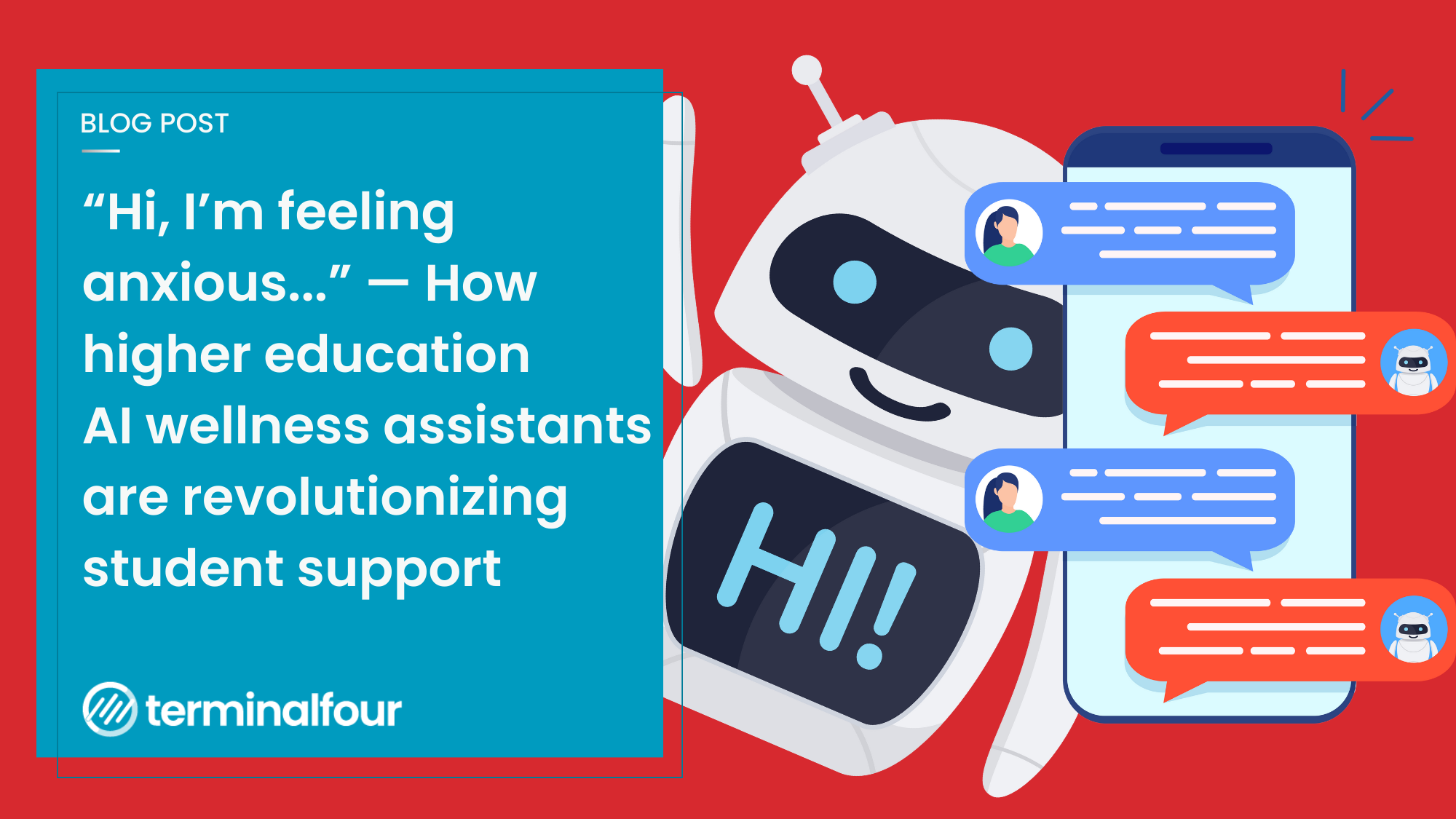Mental health in higher education is no longer just a student affairs issue—it’s a critical component of the student experience, institutional reputation, and even enrollment strategies.
This year, the recently released 2025 EDUCAUSE Horizon Action Plan: Mental Health Supports—a key report that highlights key trends and practices that are shaping the future of higher education— highlights the growing need for institutions to take a proactive and holistic approach to mental health, with clear steps for implementation.
Built on insights from a global panel of higher ed leaders, the report doesn’t just predict what’s next—it helps institutions prepare for the challenges and opportunities ahead.
Whether you're looking at shifting student expectations, new tech in the classroom, or evolving support services, this report offers a big-picture view of what’s coming and why it matters.
For marketers, this presents both a responsibility and an opportunity.
Integrating mental health messaging into institutional branding, digital content, and recruitment strategies can enhance student engagement and demonstrate a commitment to student well-being.
So, what does this mean in practice?
Here are the key takeaways and how higher education marketers can play a role in shaping a healthier campus culture.
1. Mental health as a core institutional value
We’ve written about the importance of mental health in higher education from a marketing perspective before, and we’re seeing the trend towards this becoming increasingly important as a content strategy as well as a ‘core value’.
One of the biggest shifts outlined in the action plan is the need to embed mental health into the institution’s core mission.
This means moving beyond reactive support services and creating a culture where well-being is prioritized across academics, student services, and even marketing.
For marketers, this presents an opportunity to showcase the institution’s commitment to student wellness through storytelling, brand messaging, and campus communications.
Featuring mental health initiatives in recruitment materials, social media campaigns, and student testimonials can help prospective students see the institution as a place that truly supports their overall well-being.
Read more on how to market your wellness resources on our blog:
2. Removing barriers to access
Another key challenge highlighted in the report is that many students are unaware of or hesitant to access mental health resources.
Whether due to stigma, lack of information, or logistical barriers, institutions need to improve communication around available support.
This is where digital content strategy becomes crucial.
So what can you add or change to your marketing strategy?
First, SEO-optimized content that ensures mental health resources are easily discoverable your website.
Clear call to actions on social media and email campaigns can also students to available support.
You can also integrate wellbeing resources with student portals and apps to make support more accessible within your students’ daily digital interactions.
A well-designed, easily navigable mental health section on the institution’s website can make all the difference.
In the age of AI—and not mentioned on the Report—more and more universities are integrating 24/7 AI Wellbeing chatbots.
3. Training faculty and staff as mental health advocates
The action plan calls for training faculty and staff to recognize signs of mental health challenges and provide appropriate support.
But students also turn to digital resources for guidance—making marketing and communication teams key players in this effort.
As a higher ed marketer, how can you help?
Create engaging video content featuring your faculty, staff, and student leaders discussing mental health.
Or develop internal training materials to help faculty communicate effectively about available resources.
Promoting and showcasing campus-wide well-being initiatives can help reduce stigma and encourage open dialogue, showing your students that you care.
By leveraging digital storytelling, you can normalize mental health conversations and provide faculty with the tools to better support students—and they’ll see the difference.
4. Cross-institutional collaboration and best practices
No institution should tackle mental health challenges alone.
This is one area where partnerships with other universities, mental health organizations, and tech providers can help you scale your efforts and learn from best practices.
And if you’re partnering, why not engage in some co-marketing activities, highlighting collaborations in thought leadership content, press releases, and your institution’s blog posts.
By sharing success stories and case studies, you can reinforce their credibility and leadership in student mental health, and show that it comes from the top down as well as inside out!
5. A proactive approach to mental health messaging
Historically, many institutions tend to communicate about mental health reactively—addressing concerns only when a crisis arises.
The EDUCAUSE report recommends shifting toward proactive, preventative communication strategies.
How can you prepare proactively?
- Regularly feature mental health content in newsletters, social media, and websites.
- Collaborate with student influencers to create peer-driven content that resonates with current and prospective students.
- Integrate well-being messaging into recruitment campaigns, reinforcing that mental health is a priority from day one.
- A consistent, proactive communication strategy can help position you as a leader in student well-being—which, in turn, can positively impact student retention and enrolment.
Wellness is no longer a 'nice-to-have'
Mental health is no longer a niche issue in higher education—it’s a defining factor in student success, institutional reputation, and even enrollment strategy.
The 2025 EDUCAUSE Horizon Action Plan is a good roadmap, but the conversation can’t end there.
It’s up to each institution to integrate mental health and supports into your branding, digital strategy, and student communications.
For marketers, this means going beyond traditional recruitment messaging and making student well-being a visible and integrated part of the institution’s story.
By doing this, you can not only support student success but also enhance your reputation as a forward-thinking, student-centered university that has what modern students care about: their mental well-being.
What steps is your institution taking to communicate about mental health? Share them with us in the comments on social media.

:format()//media/How-higher-ed-can-support-student-mental-health---RQ.png)

